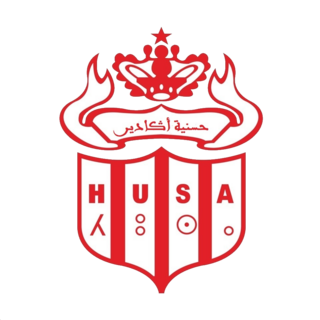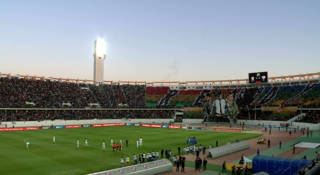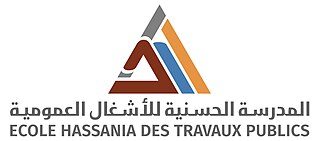
Hasania (or Hassania) are members of a Muslim tribe of Arab origin. As of 1911, they were inhabitants of the desert between Merowe and the Nile at the 6th Cataract, and the left bank of the Blue Nile immediately south of Khartoum. [1]

Hasania (or Hassania) are members of a Muslim tribe of Arab origin. As of 1911, they were inhabitants of the desert between Merowe and the Nile at the 6th Cataract, and the left bank of the Blue Nile immediately south of Khartoum. [1]

Lake Tana is the largest lake in Ethiopia and the source of the Blue Nile. Located in Amhara Region in the north-western Ethiopian Highlands, the lake is approximately 84 kilometres long and 66 kilometres wide, with a maximum depth of 15 metres, and an elevation of 1,788 metres. Lake Tana is fed by the Gilgel Abay, Reb and Gumara rivers. Its surface area ranges from 3,000 to 3,500 square kilometres, depending on season and rainfall. The lake level has been regulated since the construction of the control weir where the lake discharges into the Blue Nile. This controls the flow to the Blue Nile Falls and hydro-power station.

The Nile is a major north-flowing river in northeastern Africa. It flows into the Mediterranean Sea. The Nile is the longest river in Africa and has historically been considered the longest river in the world, though this has been contested by research suggesting that the Amazon River is slightly longer. Of the world's major rivers, the Nile is one of the smallest, as measured by annual flow in cubic metres of water. About 6,650 km (4,130 mi) long, its drainage basin covers eleven countries: the Democratic Republic of the Congo, Tanzania, Burundi, Rwanda, Uganda, Kenya, Ethiopia, Eritrea, South Sudan, Republic of the Sudan, and Egypt. In particular, the Nile is the primary water source of Egypt, Sudan and South Sudan. Additionally, the Nile is an important economic river, supporting agriculture and fishing.


The White Nile is a river in Africa, one of the two main tributaries of the Nile, the other being the Blue Nile. The name comes from the clay sediment carried in the water that changes the water to a pale color.

Lake Albert, originally known as Lake Mwitanzige and temporarily Lake Mobutu Sese Seko, is a lake located in Uganda and the Democratic Republic of the Congo. It is Africa's seventh-largest lake, as well as the second biggest of Uganda's Great Lakes.
Gondokoro island is located in Central Equatoria. The island was a trading-station on the east bank of the White Nile in Southern Sudan, 1,200 kilometres (750 mi) south of Khartoum. Its importance lay in the fact that it was within a few kilometres of the limit of navigability of the Nile from Khartoum upstream. From this point the journey south to Uganda was continued overland.

Georg August Schweinfurth was a Baltic German botanist and ethnologist who explored East Central Africa.
Charles Tilstone Beke was an English traveller, geographer and Biblical critic.

Ripon Falls at the northern end of Lake Victoria in Uganda was formerly considered the source of the river Nile. In 1862–63 John Hanning Speke was the first European to follow the course of the Nile downstream after discovering the falls that his intuition had marked as the source of the Nile.

The Sobat River is a river of the Greater Upper Nile region in northeastern South Sudan, Africa. It is the most southerly of the great eastern tributaries of the White Nile, before the confluence with the Blue Nile.

Khartoum North, or Khartoum Bahri, is a city in Khartoum State, lying to the north of Khartoum city, the capital of Sudan.

The Fédération Nationale du Scoutisme Marocain is the national federation of several Scouting organizations of Morocco. It was founded in 1933, and became a member of the World Organization of the Scout Movement in 1961. The coeducational Fédération Nationale du Scoutisme Marocain has 12,304 members as of 2004.

Hassania Union Sport d'Agadir commonly referred to as Hassania Agadir and known as l'Hassania, or simply as HUSA, is a Moroccan football club based in Agadir. The club was founded on December 22, 1946. It plays its home games at Adrar Stadium.

Adrar Stadium is a multi-use stadium in Agadir, Morocco, that was inaugurated in 2013. It is used mostly for football matches. The stadium has a capacity of 45,480 seat. It was supposed to hold 2010 FIFA World Cup games if Morocco had been chosen to be the host country. The stadium is home to Association football club Hassania Agadir, replacing their old venue Stade Al Inbiaâte. It has hosted four matches of the 2013 FIFA Club World Cup in December 2013 and was one of the stadiums to be used for the 2015 Africa Cup of Nations but did not host the cup because of Morocco's cancelled hosting due to fears of the Ebola outbreak. It was one of the 14 venues for Morocco's bid for the 2026 FIFA World Cup, it would have hosted a quarter-final even if Morocco had have been awarded the World Cup.

The Hassania School of Public Works, is one of Morocco's oldest engineering schools, a member of the Conférence des grandes écoles, and remains to this day the most prestigious Moroccan Grande Ecole in engineering. It is located in Casablanca few miles from the Casablanca Technopark.
Eugen Moldovan, also known as Ojine Moldovane in Morocco, is a Romanian football manager who last managed Saham Club in Oman.
El-Hassania Darami is a former Moroccan long-distance runner who specialised in 1500 metres, 3000 metres, and 10,000 metres events. She won six medals in four different African Championships from 1979 to 1988, including one gold in 10,000 metres at the 1985 African Championships in Athletics. She also competed for Morocco in the 1988 Summer Olympics in the same event, but did not progress to the finals.

The 1962–63 season of the Moroccan Throne Cup was the 7th edition of the competition.